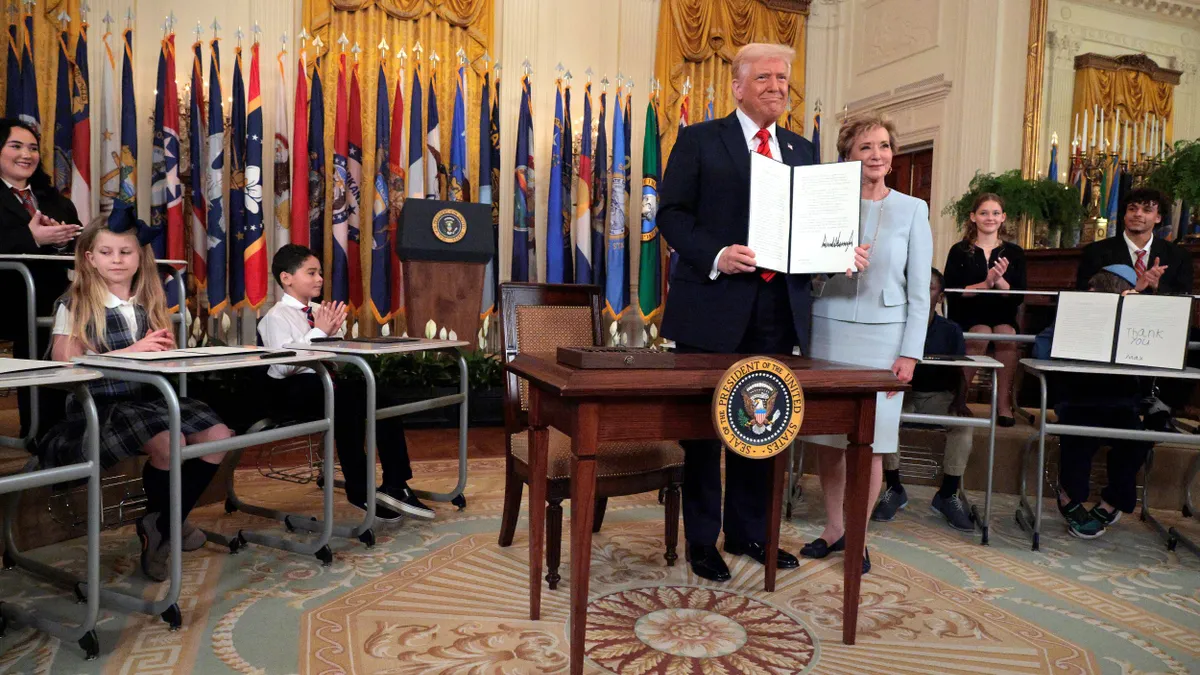At least 21 individuals died during the 2019 Polar Vortex—including two university students. The University of Vermont and the University of Iowa both experienced deaths suspected to be due to exposure to sub-zero temperatures. These universities are no strangers to severe winter weather, but these extreme weather conditions are becoming more common, and campuses must prepare.
It's impossible to reliably predict every emergency. But weather events are one crisis that can be anticipated, based on your region and common weather threats experienced. Universities and college campuses are also often in the unique position of coordinating with internal safety officials and campus police along with community safety officials. A weather preparedness plan puts processes in place to protect your students, faculty, and institution. By having a weather preparedness plan ready for deployment, your campus can react swiftly to threats—and substantially reduce the risk of injury or even death.
What is a weather preparedness plan?
A weather preparedness plan is not unlike a disaster preparedness plan. When a weather emergency is imminent, a weather preparedness plan outlines:
- Who is responsible for specific action items
- How students, faculty members, and other parties will be notified of the emergency
- What actions will be taken to protect the individuals and the property on campus
- How on-going weather-related training and education will be handled
Weather preparedness plans must be created, regularly revised, and re-evaluated regularly. In other words, they need to be integrated into the core processes for an organization. The advantages to creating and practicing a plan are clear: last-minute decisions will not need to be made on a whim when an emergency does occur.
Creating a hierarchy of responsible individuals
Responsibility and accountability are necessary for a healthy emergency response. When individuals are directly empowered to take action, they are faster to respond and more effective. If no one knows who is responsible for alerting students in the event of a rapidly approaching weather emergency, it's possible they won't be alerted at all.
Specific positions must be responsible for both identifying and reacting to weather-related emergencies. Protocols should be established for both initially defining and escalating weather-related threats, so weather-related threats are not underestimated. Further, a hierarchy should be involved, so that if one position is unavailable to take control, another position is called upon.
Strengthen Your Campus Communication Plan: Tips for Higher Education
Download this free report for sample crisis notification templates and to discover more ways to strengthen your campus communication plan.
Developing and testing an emergency alert system
When an emergency occurs, a critical component to preparedness is an emergency alert system. From tornados to blizzards, weather-related emergencies are most dangerous to those who haven't been given time to prepare. It's important that students, faculty members, and any other on-campus employees be immediately alerted as to the nature of the emergency and how severe the emergency will be.
Those on or off campus should be alerted through phone, email, and text. By having a method in place to distribute information quickly, a campus can greatly lower the risk of someone being caught unaware. A single method alone is not enough: someone may not check their email or may miss on-campus announcements.
Of all methods of alerting, smartphone alerts are likely the most effective. Both students and faculty members are highly likely to have their phone with them and are likely to check messages as they come in. Smartphones have become ubiquitous. However, in order to maintain such an alerting system, the campus also needs to make sure it has up-to-date information for all of its students and faculty, and needs to test the system frequently.
Protecting the campus and individuals on-campus
There are certain actions that may need to be taken in preparation for an on-coming weather event. As an example, awnings may need to be taken down, windows may need to be reinforced, and certain buildings may need to be shut down. If necessary, storm shelters need to be prepared and safety personnel need to be available to answer questions and provide guidance.
Inspections of the campus, before weather becomes severe, may also be necessary. In cold weather and hot weather extremes, safety personnel can establish campus patrols to identify individuals who may be in danger.
Preparing for new and upcoming threats
In addition to creating processes, education and training are also important. Students and faculty members need to be aware of the dangers that certain weather-related emergencies present, what they should do when different types of weather-related emergency occur, and how to respond to emergency alerts. Ignoring a weather-related alert could lead to significant dangers.
Before each season, campus safety departments should explore the potential upcoming threats and conduct a full safety audit. Safety audits should go over any potential risks to the campus (such as not having a functioning alert system) while also outlining methods of addressing these risks. Regular safety audits will ensure that the campus continually evolves with new threats.
Assessing and revising your protocols
After a weather emergency has occurred, it's important to conduct a full assessment of how the emergency was handled. If any injuries did occur, the campus safety department should investigate the injuries and create suggestions regarding how these injuries could be prevented in the future. Routine assessments are the best way to improve protocols, as only in practice can some weaknesses be revealed.
A weather preparedness plan is the first step you can use to take control over your campus risk. With weather becoming increasingly volatile and emergencies becoming more common, it's important to take proactive steps towards better safety and security. Those charged with the safety of a university or college campus may need to review their policies now to ensure that their policies are still adequate in a swiftly changing climate.
Strengthen Your Campus Communication Plan: Tips for Higher Education
Download this free report for sample crisis notification templates and to discover more ways to strengthen your campus communication plan.





